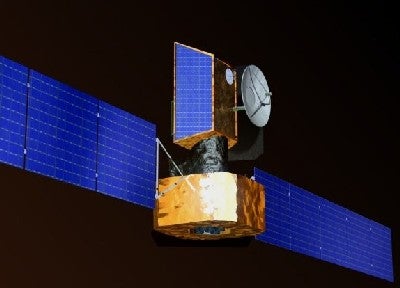BepiColombo, a mission to make the most comprehensive study of Mercury ever, is due for launch in August 2013. It is the first dual mission to Mercury, with one European spacecraft and one provided from Japan. The programme is carried out as a joint mission under ESA leadership with the Japanese Aerospace Exploration Agency (JAXA).
Keith Mason, Chief Executive of the Science and Technology Facilities Council which funds UK space science said “BepiColombo will make the most detailed study of Mercury ever, revealing the secrets of the planet closest to the Sun — what it is formed of, how the Sun affects it and what we can learn about the other planets by comparison. It is technically challenging to send a probe to Mercury due to the extreme heat conditions, high levels of radiation and the strong gravitational pull of the Sun. A mission of this complexity reveals the ingenuity of our scientists and engineers.”
BepiColombo consists of two spacecraft. One spacecraft, ESA’s Mercury Planetary Orbiter (MPO), will carry 11 instruments to study the surface and internal composition of the planet with unprecedented accuracy, using different wavelengths and investigation techniques.
The second spacecraft, JAXA’s Mercury Magnetospheric Orbiter (MMO), will carry five instruments to study the planet’s magnetosphere, the region of space around the planet that is dominated by its magnetic field.
George Fraser of the University of Leicester Space Research Centre is leading a research team from five countries to build the Mercury Imaging X-ray Spectrometer (MIXS) which will fly on the MPO craft. He said “MIXS will look at the x-rays coming from the planet Mercury to study the composition of the surface, helping us to test models of the planet’s formation. X-ray remote sensing has told us a great deal about the Moon and the asteroids, but MIXS will be the first true x-ray imaging telescope to be used in planetary science.”
David Rothery of the Open University, who is the UK Lead Scientist for MIXS and Co-Chairman of ESA’s Mercury Surface and Composition Working Group, said, “The preliminary close-up images from NASA’s MESSENGER flyby of Mercury this week offer tantalizing indications of a complex history of lava flows partly burying the planet’s more ancient primitive crust. The high spatial resolution achievable by MIXS will be vital in order to distinguish the compositions of these two very different types of crust, which is essential if we are to unravel the mysteries of Mercury’s origin and evolution.”
Magna Parva, a specialist firm from Loughborough are developing, the mechanical structure for the MIXS telescope with the University of Leicester Space Research Centre. The MIXS Optics structure is an extremely challenging mechanical engineering project that involves working alongside Fraser and his team to ensure that the science objectives of the MIXS instrument are met. The decision to involve a small, relatively unknown, flexible company in the MIXS project has brought an innovative approach to instrument design and may provide a model for UK space science projects in the future.
A vital sister instrument to MIXS is the Solar Intensity X-ray Spectrometer (SIXS), led from Finland, which will measure the x-rays and particles from the Sun that trigger the fluorescence on Mercury’s surface.
Engineers at STFC’s Rutherford Appleton Laboratory are working on integrated circuits for reading out signals from the detectors of the SIXS instrument. These have been manufactured and testing will begin shortly.
On behalf of ESA, the prime contractor Astrium will lead a network of subcontractors to design and build ESA’s MPO spacecraft and the so-called Mercury Transfer Module — that is the module to carry the MPO-MMO composite spacecraft to its destination.
Astrium in the UK is responsible for the structure of the entire spacecraft including the launch vehicle adapter, the complex mission analysis that will require numerous swing-bys of the Earth, the moon, and Venus in its six year flight plan, and also the two chemical propulsion systems and the ion propulsion system.
An additional difficulty is that reaching Mercury and then entering into orbit requires a large amount of energy to brake against the Sun’s gravity. To achieve this, the cruise and the orbit insertion phases will primarily rely on solar-electric propulsion (as tested on ESA’s Smart-1 mission to the Moon), complemented by several planetary gravity-assist manoeuvres and conventional (chemical) propulsion.
“Mercury is the planet closest the Sun, making it hard to get to and so it is a technical challenge by anyone’s measure,” said David Southwood, ESA’s Director of Science. “However Mercury has also regularly confounded planetary scientists with its exceptional properties and that makes it a grand scientific challenge.”










